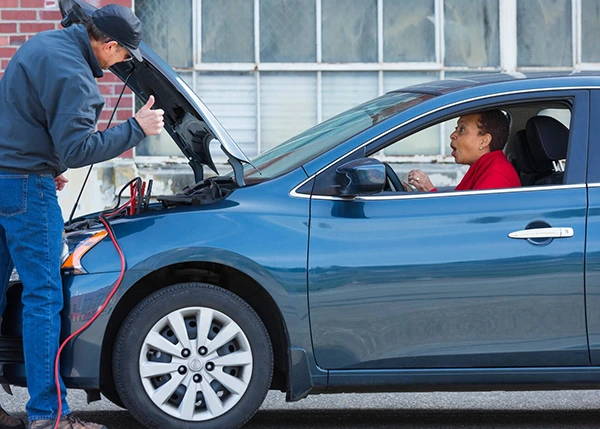You may not realize it, but your car battery can give you subtle hints when it’s on its last legs.
A slow engine crank, dim lights, or a warning light on your dashboard can signal trouble. Ignoring these signs might leave you stranded at the worst possible moment.
So, how can you tell if it’s time for a replacement?
Let’s explore these warning signs further to keep your vehicle running smoothly.
Slow Engine Crank
A slow engine crank is often one of the first indicators that your car battery is weakening or on the verge of failure.
If your engine struggles to start or takes longer than usual to turn over, it’s a clear sign that your battery may not be providing enough power.
Recognizing the Signs
- When you turn the key, the engine cranks slowly or hesitates before starting.
- You may hear a weak, sluggish whirring sound instead of a strong, smooth crank.
- It might take multiple attempts to get the engine running, especially in colder weather.
Why This Happens
- A weak or aging battery may no longer hold a full charge, reducing its ability to start the engine efficiently.
- Cold temperatures, corrosion, or loose connections can make it harder for the battery to deliver power to the starter motor.
- If you frequently take short trips, the battery may not have enough time to recharge properly, leading to a gradual loss of power.
What You Should Do
- Have your battery tested by a professional or use a voltmeter to check its charge level before it completely fails.
- Regularly clean battery terminals to prevent corrosion, which can interfere with electrical flow and weaken performance.
- If your battery is more than three years old or repeatedly struggles to start your vehicle, replacing it sooner rather than later can help you avoid unexpected breakdowns.
A slow engine crank today could mean a dead battery tomorrow, so it’s best to address the issue early to keep your car running smoothly and reliably.
Dim or Flickering Lights
Dim or flickering lights in your vehicle often indicate that your car battery is losing its charge and struggling to supply constant power.
Since your battery powers all electrical components, any inconsistency can affect visibility and overall performance.
Common Signs to Watch For
- Headlights appear weaker than usual, especially at night.
- Interior and dashboard lights seem dim or flicker unexpectedly.
- Lights may pulse or change brightness when accelerating or braking.
Why This Happens
- An aging or weak battery may not maintain a stable voltage, affecting lighting performance.
- A failing alternator might not be charging the battery properly, leading to inconsistent power.
- Corroded battery terminals or loose connections can interfere with electrical flow, causing flickering.
How to Fix the Issue
- Have your battery and alternator tested to determine the cause of the power fluctuations.
- Check and clean battery terminals to remove corrosion that may be disrupting the electrical connection.
- If your battery is over three years old or repeatedly struggles to hold a charge, consider replacing it before it fails completely.
Addressing dim or flickering lights early can help you avoid unexpected breakdowns and ensure your vehicle’s electrical system remains reliable and safe.
Warning Dashboard Light
A warning dashboard light is your car’s way of alerting you to potential battery or electrical system issues.
This light typically resembles a battery icon and should never be ignored, as it may signal a charging failure or a deeper problem.
Common Causes of the Warning Light
- Weak or failing battery struggling to hold a charge.
- Faulty alternator not properly recharging the battery.
- Loose or corroded battery connections affecting power flow.
What to Do When It Appears
- Check your battery’s condition—test its voltage and inspect for visible damage.
- Inspect the alternator, as a failing unit can prevent proper charging.
- Ensure battery terminals are clean and secure, removing any corrosion.
Why Immediate Action Matters
Ignoring the warning light could result in a sudden breakdown, leaving you stranded. By addressing the issue early, you can prevent costly repairs and ensure your vehicle’s reliability.
Taking action at the first sign of a failing battery can prevent unexpected breakdowns and costly repairs.
Whether you notice a slow engine crank, dim lights, or a dashboard warning, addressing these issues promptly ensures your vehicle remains reliable and safe.
Regular battery maintenance, testing, and timely replacements will keep your car running smoothly, giving you peace of mind on the road.

